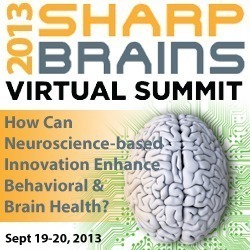Robert Bilder: We are embarking on the next stage of human evolution
What is your current job title and organization, and what excites you the most about working there?
I’m the Tennenbaum Family Professor of Creativity Research at UCLA’s Semel Institute for Neuroscience & Human Behavior. The Semel Institute and UCLA overall are amazing places to be involved in highly collaborative trans-disciplinary research.
Please tell us about your interest in applied brain science. What areas are you most interested in? What motivated you to pursue work in your field?
I’m a clinical neuro-psychologist interested in understanding how we can deploy new neuroscience knowledge to change our brains. I believe we are embarking on the next stage of human evolution!
What is one important thing you are working on now, and where can people learn more about it?
We are just starting a new study of “Big C” Creativity, supported by the John Templeton Foundation, and will be examining the brains and cognitive functions of internationally renowned visual artists and scientists. SharpBrains readers and learn more here.
What are 1–2 key things you’d like every person to understand regarding his/ her own brain and mind, that you think is commonly misrepresented or not addressed in the popular media?
I wish we could displace all the myths about the differences between the left and right hemispheres, which I believe ends up being misrepresented a lot. Instead, I wish more people knew about the “dorsal-ventral” distinction in the human cortex, which is a cornerstone of evolutionary development of the mammalian brain, and helps explain a great deal about the balance of stability and flexibility in mental and emotional processing.
Where do you see clear “low-hanging fruit” to enhance behavioral and brain health based on neuroscience and innovation?
Basic planning and organizational tools are not as well recognized as they should be; these are some of the most profound ways we know to “gear up” our frontal lobes. It seems like new technologies are focusing more on streaming ever-greater volumes into our posterior cortices (through our sensory systems) and we could benefit from focusing more on tools to enhance our outputs and productivity!
What would you like the 2013 SharpBrains Virtual Summit to accomplish?
It will be great to hear everyone’s latest and greatest thoughts as progress in the field is accelerating. Also I hope everyone will share freely what is NOT working so that we can avoid the “peak of inflated expectations” in the “hype cycle” and keep expectations realistic.
Finally, what do YOU do to stay sharp?
I’ve been monitoring my activity with a FitBit, and am always trying out new organizational software to achieve IBZ and GTD (“in box zero” to “get things done”); the hope is by promoting my cognitive control I can make up for my deteriorating memory. Most important, I’ve got a wife and twin 11-year old kids to keep me on my toes!
 —This conversation is part of a new interview series with Speakers and Participants in the upcoming 2013 SharpBrains Virtual Summit (September 19–20th). You can register with a 20% discount using promotional code: sharp2020
—This conversation is part of a new interview series with Speakers and Participants in the upcoming 2013 SharpBrains Virtual Summit (September 19–20th). You can register with a 20% discount using promotional code: sharp2020



